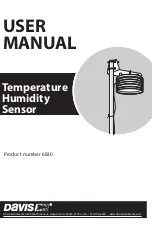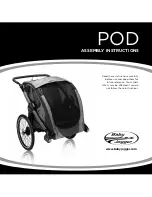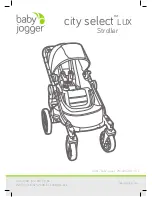
100477 - 3150W REMOTE START INVERTER GENERATOR
OPERATION
20
2. Locate the yellow manual choke lever.
3. Turn the choke lever to the “CHOKE” (right) position.
4. Turn the fuel valve to the “ON” position.
5. Turn the ignition switch to the “ON” position.
6. Pull the recoil rope until resistance is felt, then pull rapidly.
7. As the engine starts to roll over, move the choke lever to
the “RUN” (left) position.
"
NOTICE
Keep choke in “CHOKE” position for only 1 pull of the recoil
starter. After first pull, push the choke to the “RUN” position
for up to the next 3 pulls of the recoil starter. Too much
choke leads to spark plug fouling/engine flooding due to the
lack of incoming air. This will cause the engine not to start.
Battery
"
NOTICE
When the battery switch is in the “ON” position, the switch
will light up if the battery is sending out a charge. If the
switch does not light up while in the “ON” position, check
that the battery connection is still good.
Connecting Electrical Loads
Let the engine stabilize and warm up for a few minutes after
starting.
Plug in and turn on the desired 120 or 240 (if applicable) Volt AC
single phase, 60 Hz electrical loads.
–
DO NOT connect 3-phase loads to the generator.
–
DO NOT connect 50 Hz loads to the generator.
–
DO NOT overload the generator.
!
WARNING
Connecting a generator to your electric utility company’s
power lines or to another power source may be against
the law. In addition this action, if done incorrectly, could
damage your generator and appliances and could cause
serious injury or even death to you or a utility worker who
may be working on nearby power lines. If you plan to run a
portable electric generator during an outage, please notify
your electric utility company immediately and remember to
plug your appliances directly into the generator. Do not plug
the generator into any electric outlet in your home. Doing
so could create a connection to the utility company power
lines. You are responsible for ensuring that your generator’s
electricity does not feed back into the electric utility power
lines.
If the generator will be connected to a building electrical
system, consult your local utility company or a qualified
electrician. Connections must isolate generator power from
utility power and must comply with all applicable laws and
codes.
Do Not Overload Generator
Capacity
Follow these simple steps to calculate the running and starting
watts necessary for your purposes:
1. Select the electrical devices you plan on running at the
same time.
2. Total the running watts of these items. This is the amount
of power you need to keep your items running.
3. Identify the highest starting wattage of all devices
identified in step 1. Add this number to the number
calculated in step 2. Starting wattage is the extra burst
of power needed to start some electric driven equipment.
Following the steps listed under “Power Management” will
guarantee that only one device will be starting at a time.
Power Management
Use the following formula to convert voltage and amperage to
watts:
















































